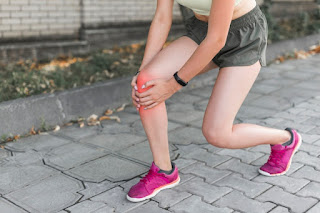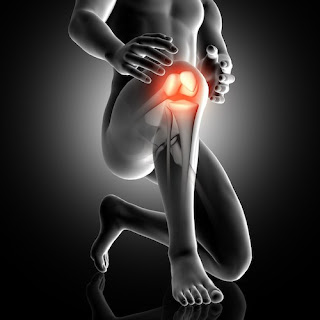Sports Injury occurs while doing exercise or while taking part in any sport. Youngsters are significantly in danger for these kinds of injuries; however, adults will get them, too.
You are in danger of sports injuries if you:
• haven't been often active
• don't warm up properly before exercise
• play contact sports
Different Sports Injury exhibits various symptoms and complications.
The foremost common forms of sports injuries include:
Sprains:
Overstretching or tearing the ligaments ends up in a sprain. Ligaments are tissue pieces that connect two bones to at least one another in a very joint.
Strains:
 Overstretching or tearing muscles or tendons ends up in a sprain. Tendons are thick, fibrous cordage of tissue that connect bone to muscle. Strains are generally mistaken for sprains.
Overstretching or tearing muscles or tendons ends up in a sprain. Tendons are thick, fibrous cordage of tissue that connect bone to muscle. Strains are generally mistaken for sprains.
Knee injuries:
Any injury that interferes with how the hinge joint moves can be a sports injury. It might vary from a pull to a tear within the muscles or tissues within the knee.
Swollen muscles:
Swelling is a normal response to an injury. Swollen muscles are painful, weak, and vulnerable to further damage.
Achilles tendon rupture:
The Achilles tendon may be a skinny, powerful tendon at the rear of your ankle joint. Throughout sports, this connective tissue will break or rupture. Once it will, you'll experience fast, sharp pain and trouble walking.
Fractures also are called broken bones.
Dislocations: Sports injuries causes dislocation of bones in your body. Once that happens, bone forced out of its socket, and this could be painful and cause swelling and weakness.
Rotator cuff injury:
Four items of muscle work along to make the body structure. The body structure keeps your shoulder acquiring all directions. Any tear in any of those muscles weakens your body structure.
Sports injuries treatment
The RICE therapy could be a conventional treatment regimen for sports injuries. It stands for:
• rest
• compression
• elevation
This treatment technique is useful for delicate sports injuries. For best results, follow the RICE technique among the primary 24 to 36 hours after the injury. It will reduce swelling and forestall extra pain and bruising within the period after a sports injury. Here's the way to follow RICE and a recovery timeline.
Both over the counter and prescription medications are accessible to treat sports injuries. Most of them offer comfort from pain and swelling.
When your sports injury looks or feels severe, you should visit your doctor or any sports injury centre. Look for emergency care if the separated joint has:
• severe pain and swelling
• visible lumps, bumps, or different deformities
• popping or crunching sounds once you use the joint
• weakness or inability to place weight on the joint
• instability
Also, look for emergency attention if you experience any of the following after an injury:
• difficulty respiration
• dizziness
• fever
Acute sports injuries will require surgery and physical therapy. If the wound doesn't heal within a period, contact your doctor for an appointment.



Comments
Post a Comment